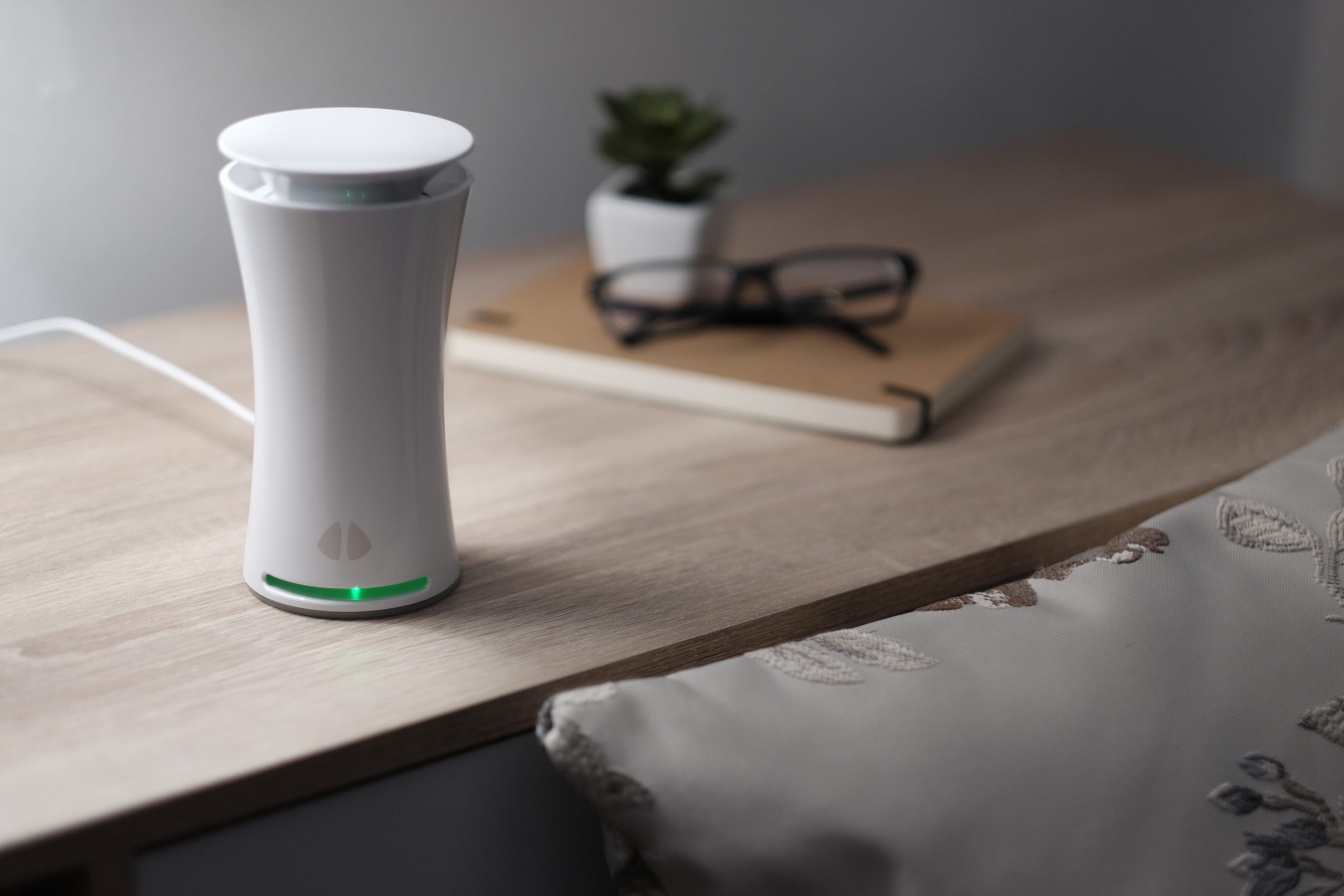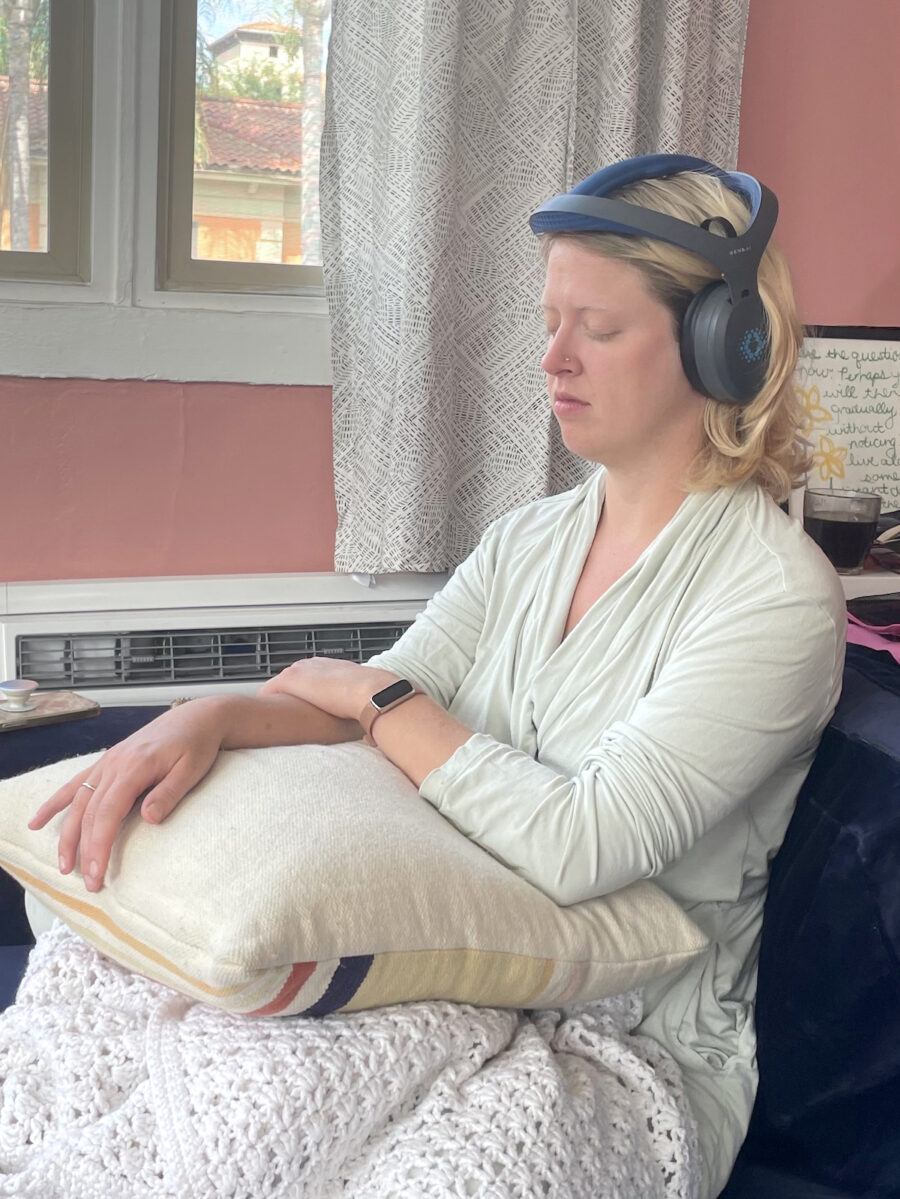
We Review Sens.ai And Get Neurofeedback At Home
Good Gear editors endorse products we’ve personally researched, tested, and genuinely love. Learn more about our methodology and business model here.
GOOD GEAR RATING — 9/10 STARS
Summary: After 10 weeks of testing and 16 cumulative hours of dedicated practice, I’m delighted by Sens.ai’s brain training device. Thanks to the neurofeedback and heart rate cohesion training, I’ve noticed a steadying in my focus and a drop in my resting heart rate. I’m excited that I can now sit for 40-minute meditations, which was unheard of before! It’s a steep investment and does have an ongoing membership fee, but if you’re already investing in wellness products and services and want to explore emerging technologies, I think this makes a great addition to a mindfulness practice.
Pros
- The Sens.ai headset is comfortable and easy to set up, with a gamified app that keeps me engaged (what can I say, I love a game!).
- I’m enjoying the positive effects of neurofeedback training and photobiomodulation, which helps to give me a boost (or calm me down) without external substances or medications.
- Tracking progress is fun! I like to see how things like sleep, hydration, and nutrition contribute to my better days vs my lower-performing ones.
- The device can be shared among multiple users, which is nice if you live with more than one person who wants to improve their cognition (you just have to get a membership for each user).
Cons
- While this technology does come with an initial investment of $1,500 plus a monthly membership, which can be prohibitive, it is more accessible than in-clinic pricing. Sessions can run about $150–$200 in a clinic, so you’ll get more training for your money if you use the device consistently over a longer period. (I think of it like if you’re paying for things like yoga retreats or other wellness memberships, this might make sense for you.)
- There are some limitations to data access. Although, since I’m not a trained neuroscientist or researcher, the raw EEG data wouldn’t be actionable — the app does a good job of putting the science into layman’s terms.
- Sens.ai isn’t a quick fix, but few cognitive health improvements are! You’ll want to practice a bit of patience.
As early as I can remember, I’ve wondered why my brain seemed to cooperate some days — and then be scattered and disorganized the next. I could tell you that my passport lies under an old stack of gift cards in the Caboodle under my desk, and that I was wearing my applique ladybug shirt when I visited Tarpon Springs, Florida with my grandparents in 1999, but I can hardly remember to renew my driver’s license or where I put my keys five minutes ago.
“As early as I can remember, I’ve wondered why my brain seemed to cooperate some days — and then be scattered and disorganized the next.”
Since getting diagnosed with ADHD two years ago, I’ve now learned more about why there’s such disarray in my mind. Learning to cooperate with the way my brain activates has been a continuous journey, and it’s one I am sure I will be on for the rest of my life. But it’s hard.
As I was researching emerging wellness technologies during the launch of Good Gear last year, I came across several different brain training programs. Many were self-guided and self-reported, which works wonders for some people but has only ever been a disappointing waste of money for me. If something doesn’t feel like it’s working or interesting to partake in, I do not want to do it (hi, dopamine!).
But I discovered with Sens.ai, I could do this all from the comfort of my own home.
While I’m not a dedicated biohacker, I am a wildly curious person on a mission to feel more balance and consistency in my life. I’ve meditated, done 30-day yoga challenges, journaled my heart out, and tried many other wellness products to help me focus my energies and make my life more efficient, to varying degrees of success. (I actually really liked EndeavorOTC, a mobile game designed for adults with ADHD to improve focus and response time, although I fell out of the habit when it became a little too repetitive.)
“While I’m not a dedicated biohacker, I am a wildly curious person on a mission to feel more balance and consistency in my life.”
But all along, I kept an eye on Sens.ai when it officially launched last summer. Finally, I was able to test a headset out myself starting in June of this year (three months ago). And let me tell you — wow! I’ve never been this excited about sitting quietly with a big headset on before; I’m genuinely looking forward to continuing this journey.
But first, let’s talk about what Sens.ai is and how it came to be.
Why & how was Sens.ai founded?
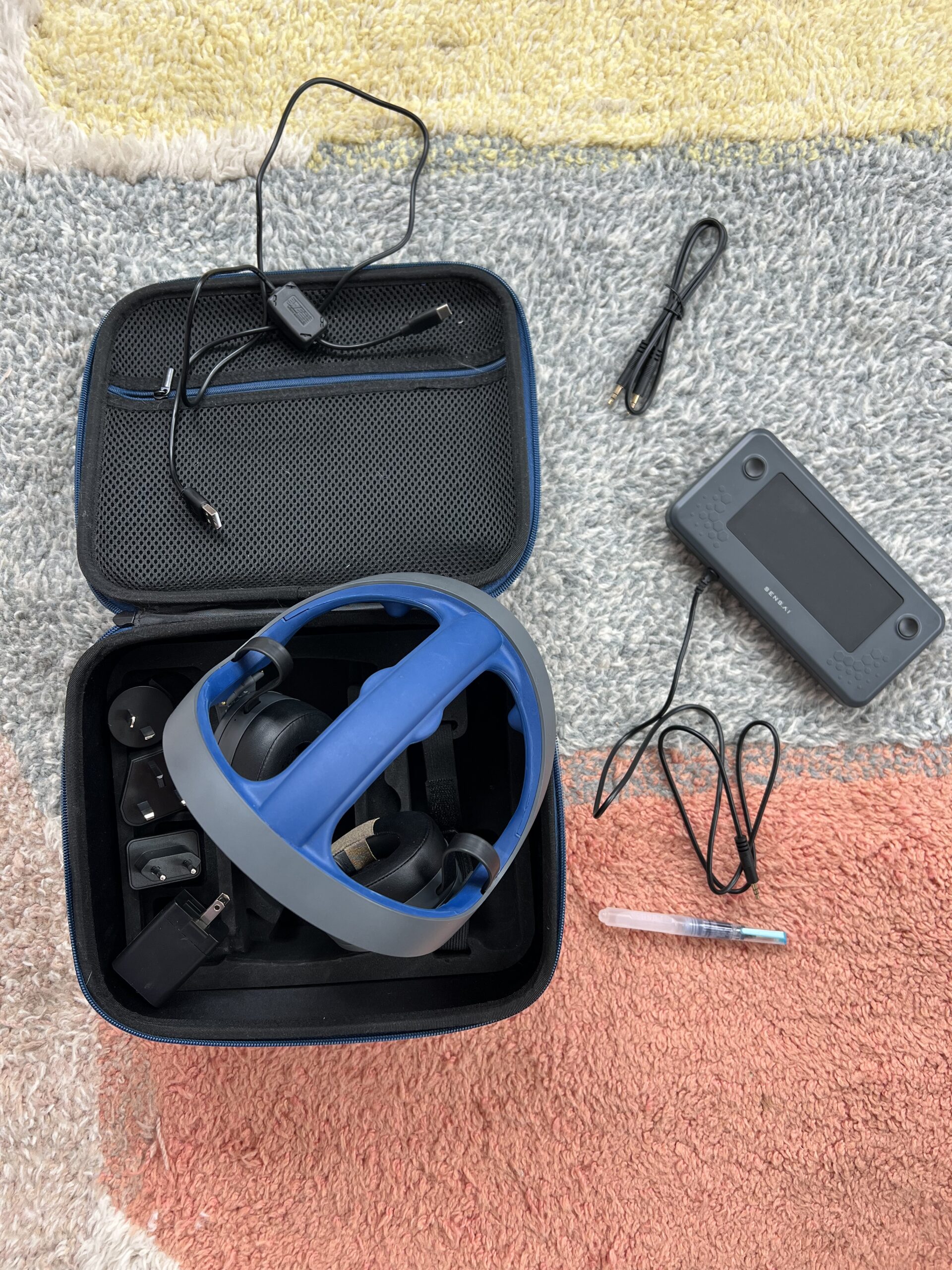
Sens.ai isn’t just another Silicon Valley invention aiming to profit from the latest trend; it was founded on deeply personal experiences. Paola Telfer, a serial tech entrepreneur with a background in electrical engineering and chip design, began exploring how to create an at-home brain training device after a car accident left her with a concussion and PTSD. To regain balance in her work, home life, and family dynamics after the accident, she turned to neurofeedback for recovery.
Neurofeedback, which is not a new methodology, helped Telfer manage her nervous system, enhance her cognition, and deepen her meditation practice. Inspired by its benefits, she sought to make this technology accessible to others. Until Sens.ai emerged, neurofeedback was primarily available in clinical settings that weren’t conducive to regular training or consistent recovery tracking.
“Neurofeedback, which is not a new methodology, helped Telfer manage her nervous system, enhance her cognition, and deepen her meditation practice.”
“We’re always training the brain,” Paola explains to host Katie Wells on the podcast Wellness Mama. “So, [that means it happens with] whatever we are consuming… whether it’s binging Netflix or the friends we choose to hang out with.” Instead of opting for yet another rewatch of our favorite show, Sens.ai aims to empower individuals to unlock higher levels of consciousness.
While I admit my initial skepticism about these grand claims (keep reading for my actual experience!), it’s clear that Sens.ai is built on solid foundations.
How Sens.ai Works
Sens.ai integrates several cutting-edge neurotechnologies:
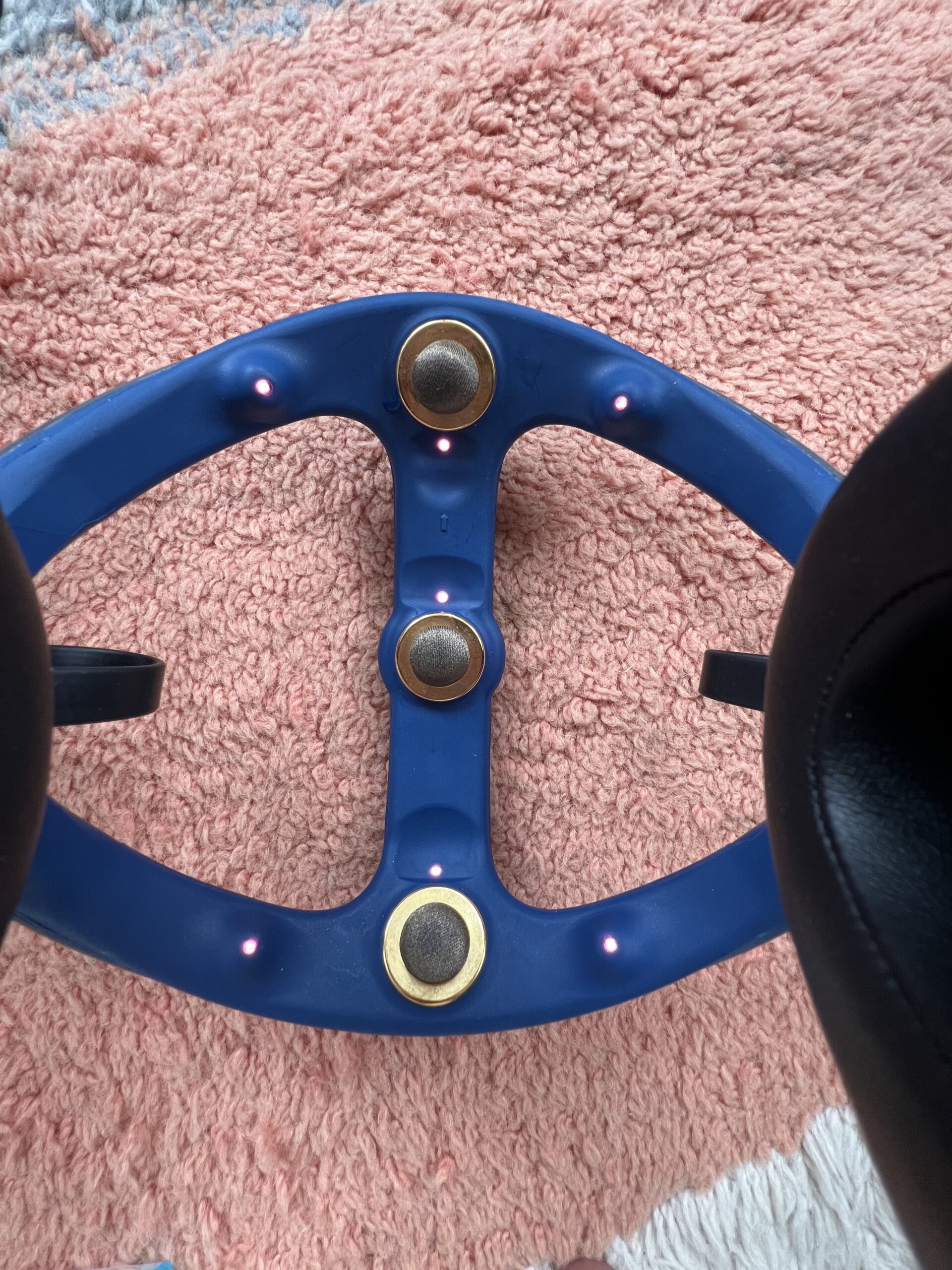
1. Neurofeedback: This non-invasive therapy uses EEG technology to detect brain waves. When users receive real-time feedback through audio or visual signals, they can practice self-control over their mental states.
2. Transcranial Photobiomodulation: This innovative approach uses red or near-infrared light stimulation to enhance brain function. Research has demonstrated its potential benefits for cognitive performance — especially in cases of traumatic brain injury and neurodegenerative disorders. (This has also been used on other areas of the body to “stimulate, heal, regenerate, and protect tissue that has either been injured, is degenerating, or else is at risk of dying,” according to this study in the National Library of Medicine.)
3. Heart Rate Variability (HRV) Training: HRV training has been linked with improved stress management and emotional regulation. I personally have been wanting to lower my resting heart rate because of a recent medicine I was on which elevated it to levels I didn’t feel comfortable with, so this aspect was especially interesting.
4. Brain Function Performance Testing: Sens.ai incorporates assessments like the Flanker Task — a clinically proven reaction time test — to evaluate cognitive progress.
While there are no peer-reviewed studies specifically on Sens.ai due to its recent release, research supporting these underlying technologies shows promise. For instance, studies have indicated that neurofeedback can significantly improve attention and cognitive performance among adults with attention deficit disorders. (“It’s me, hi, I’m the problem, it’s me,” I sing in my best Taylor Swift impression.)
“While there are no peer-reviewed studies specifically on Sens.ai due to its recent release, research supporting these underlying technologies shows promise.”

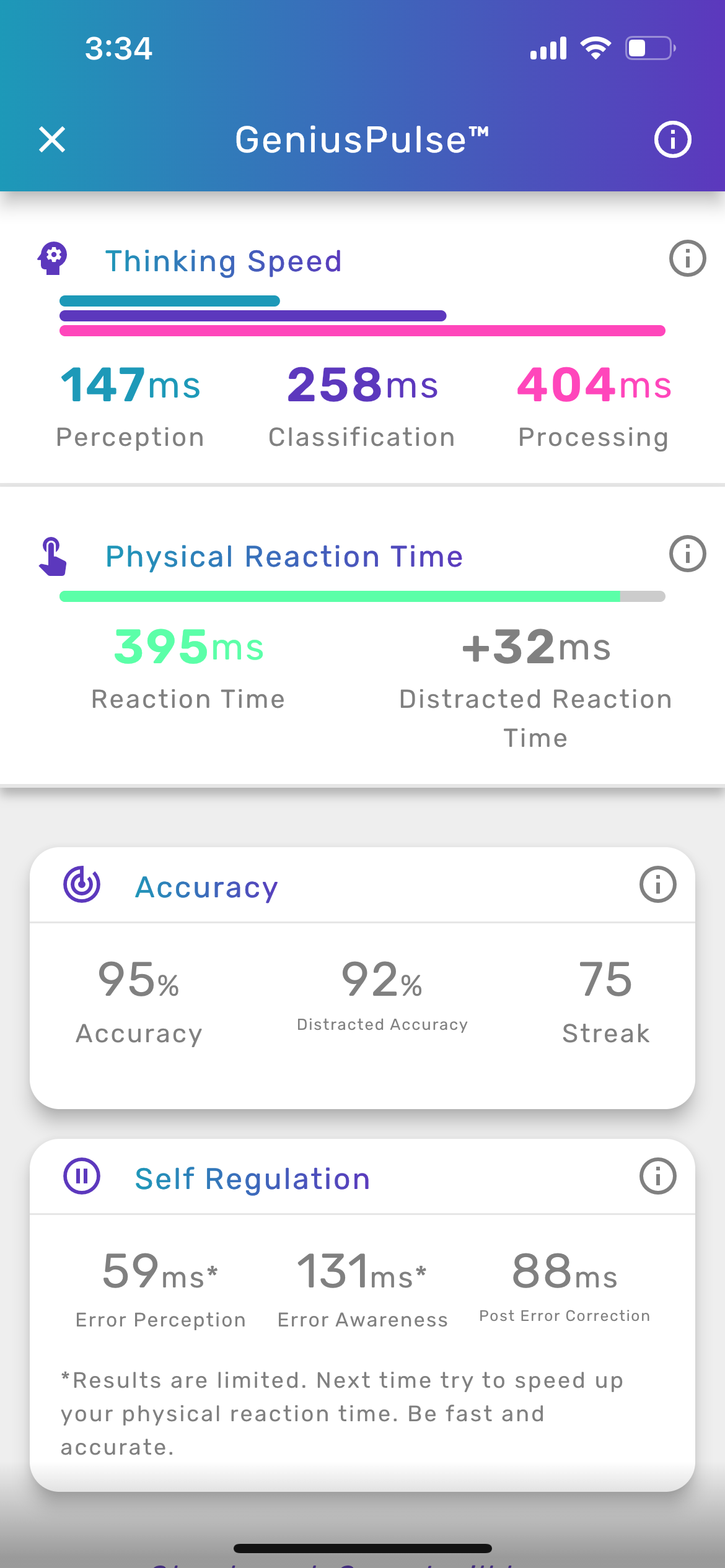

I am keeping a close eye on the science behind the product as it’s been tested by the brand itself. The Sens.ai team is technologically and scientifically robust, and includes Dr. Mark Atkinson as the Medical Director and Dr. Olivia Lesslar as the Science Director.
The company is also actively involved in scientific collaborations, like partnering with the Buck Institute to study brain aging, which could lead to significant advancements in understanding and treating age-related neurological decline.
My experience with Sens.ai
My journey with Sens.ai began in July 2024. After using it for nearly 10 weeks and clocking over 16 hours of focused training, I’ve noticed remarkable changes in my ability to meditate. Now, I can sit quietly for over 40 minutes — a feat that once felt impossible! (My past experience was with the Calm app, which was lovely but I had a hard time focusing during the 10-minute daily guided meditations).
The device consists of a comfortable headset equipped with three sensors that need moistening before each use. While connecting it can be tricky initially, it becomes easier over time — you just have to get used to nestling the headset and sitting quite still for a few moments while it calibrates.

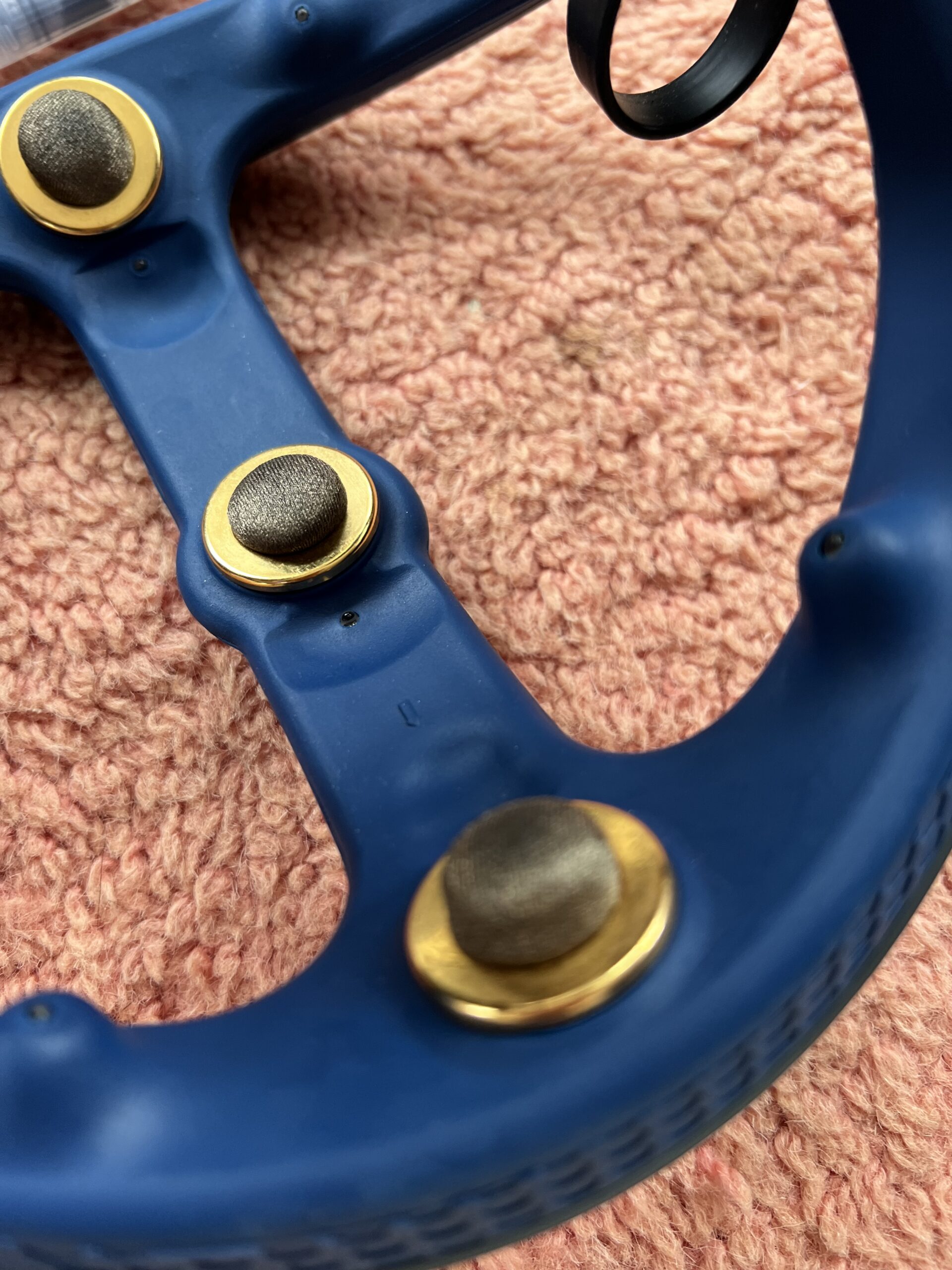
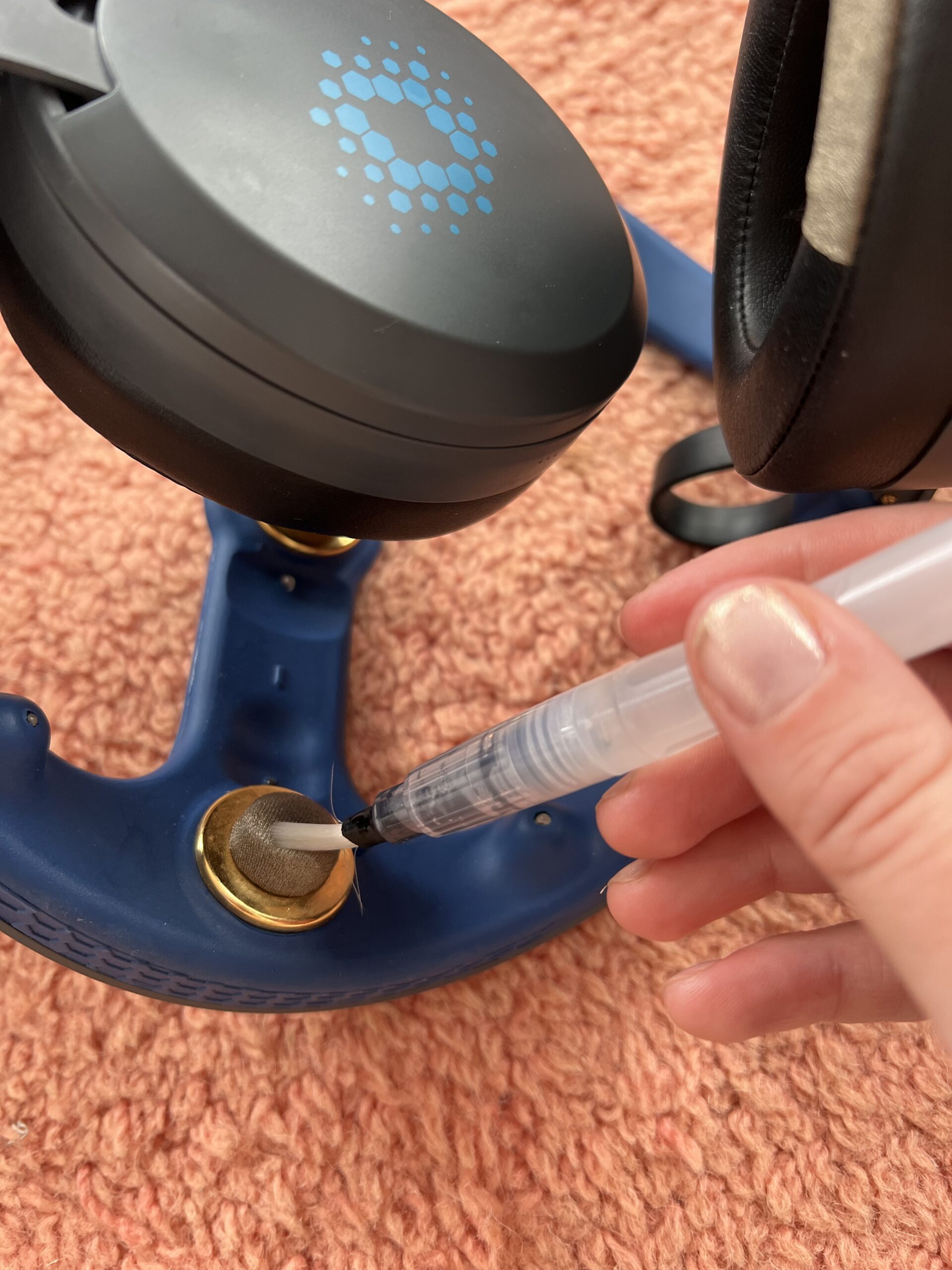
The accompanying app houses various meditations and training exercises that unlock as you progress — adding an element of gamification that keeps things engaging. The reasoning here is that clinical experience has shown you don’t want to dive into the deep end until you have a solid base of resilience.
In my onboarding questionnaire, I opted to focus on cognitive performance, as that’s my current biggest daily challenge. I started off with a practice session, then jumped into my first assessment, which uses the included handheld controller to perform an Eriksen Flanker Task. This simple visual task assesses the level of my cognitive response to detection and recognition of targets in the face of other, sometimes distracting and irrelevant, stimuli.
After that, I set up my membership so I could access my mission ($20 a month if you pay yearly, $60 a month if you go month-to-month). Missions are a series of brain trainings and boosts that lasts over the course of five to 12 weeks.
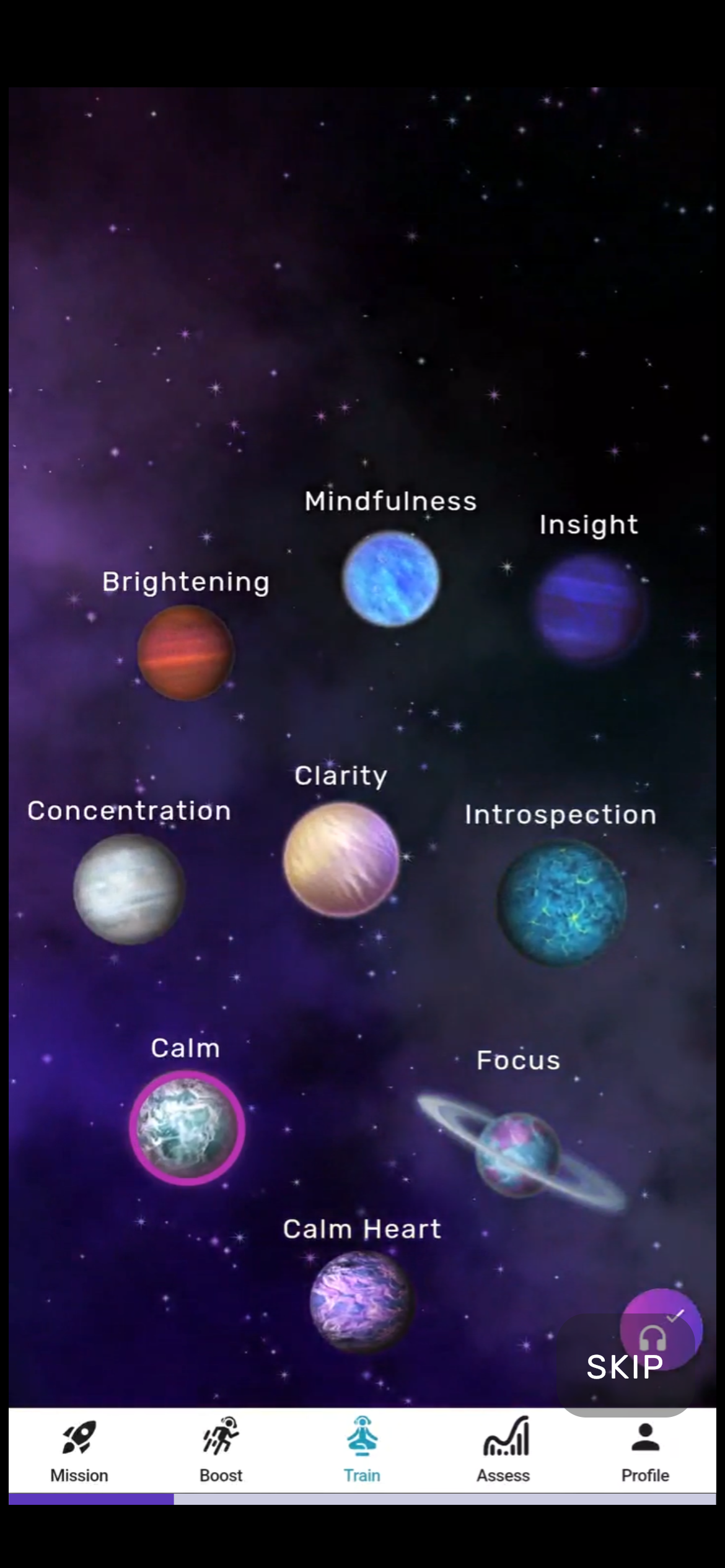
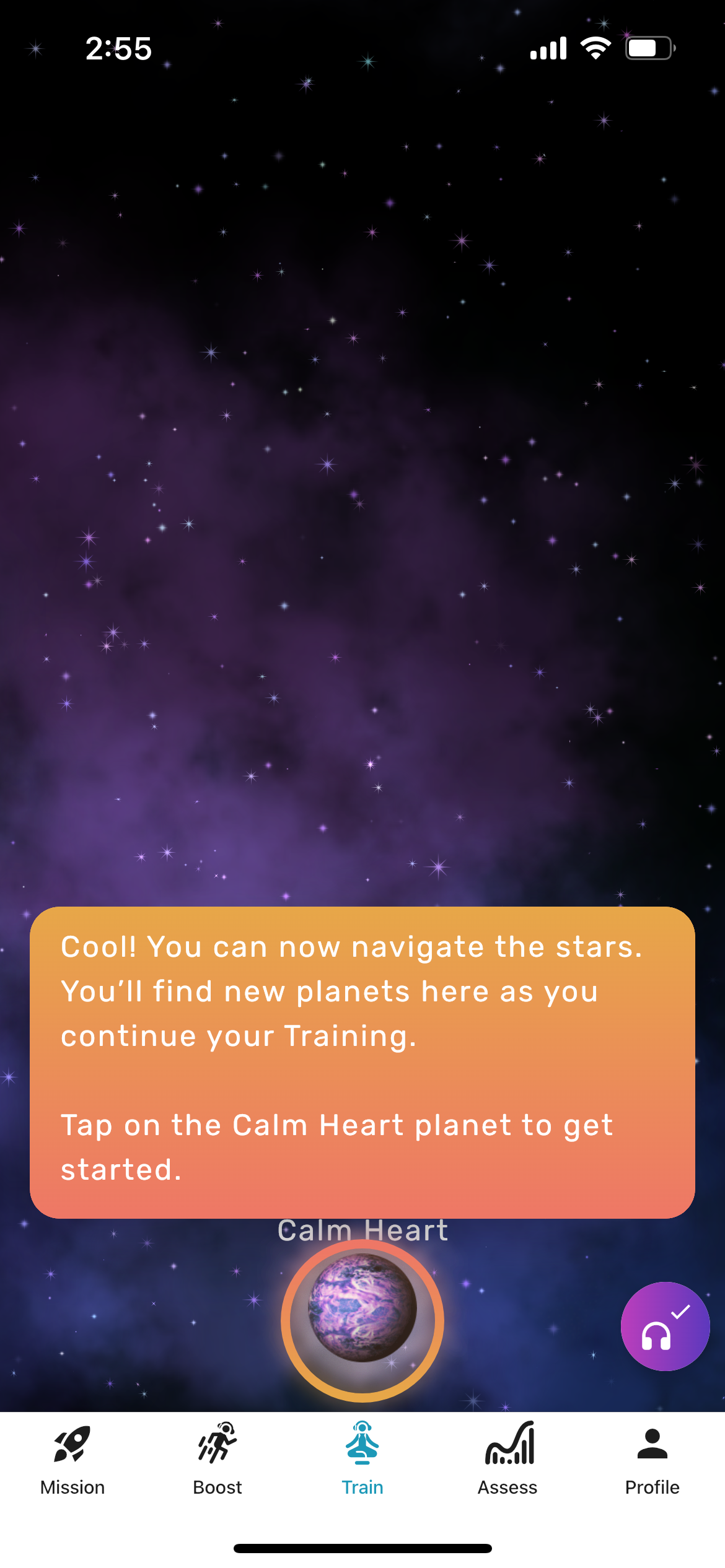
Since I want to work on focus, my current mission is Clear Mind, which includes the “Brain Fog” training. While I wear the headset, I focus on calming and focusing my mind — the app then responds with audio and visual feedback, with the music growing louder (and lovely piano notes pinging as a bonus) when I’m focused.
When my mind begins to wander, the screen gets foggy and the music fades away, which is my indicator to re-focus on my breath and stillness. It’s so fun. The app then locks me out from doing another training for 30–90 minutes for recovery.


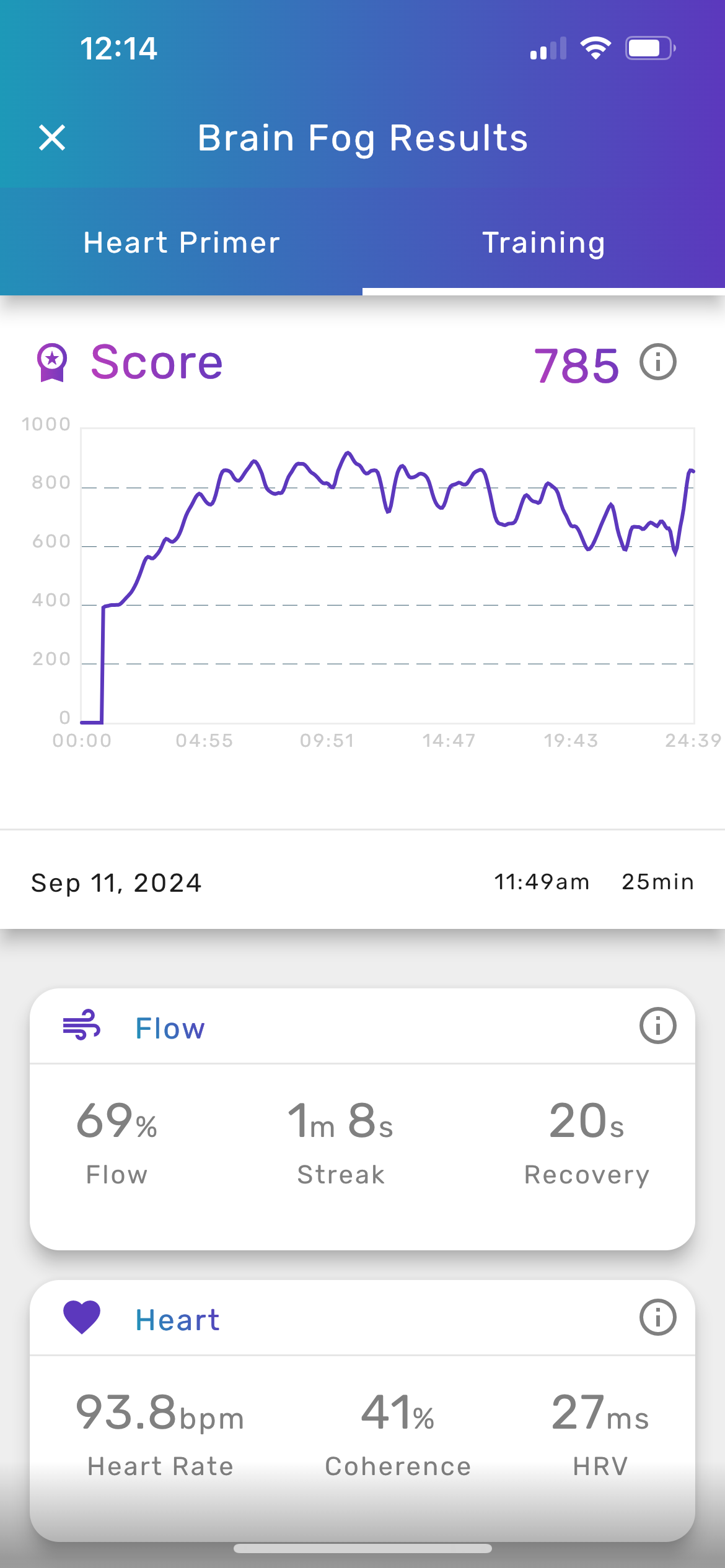
The results so far have been interesting, I can see that my resting heart rate has decreased and I’m slowly seeing improvements in the length of time I can focus.
Sens.ai pairs these neurofeedback training programs with “boosts” which use near-infrared light energy (that “transcranial photobiomodulation” I mentioned earlier) to stimulate a positive shift in your brain state. The cool down for these boosts can be about 6 hours. You can see all the available programs here.
But I don’t have to follow this prescribed pathway, if I don’t want to. There are plenty of a-la-carte training and boost options if you have the subscription, which I recommend, each with a different goal.
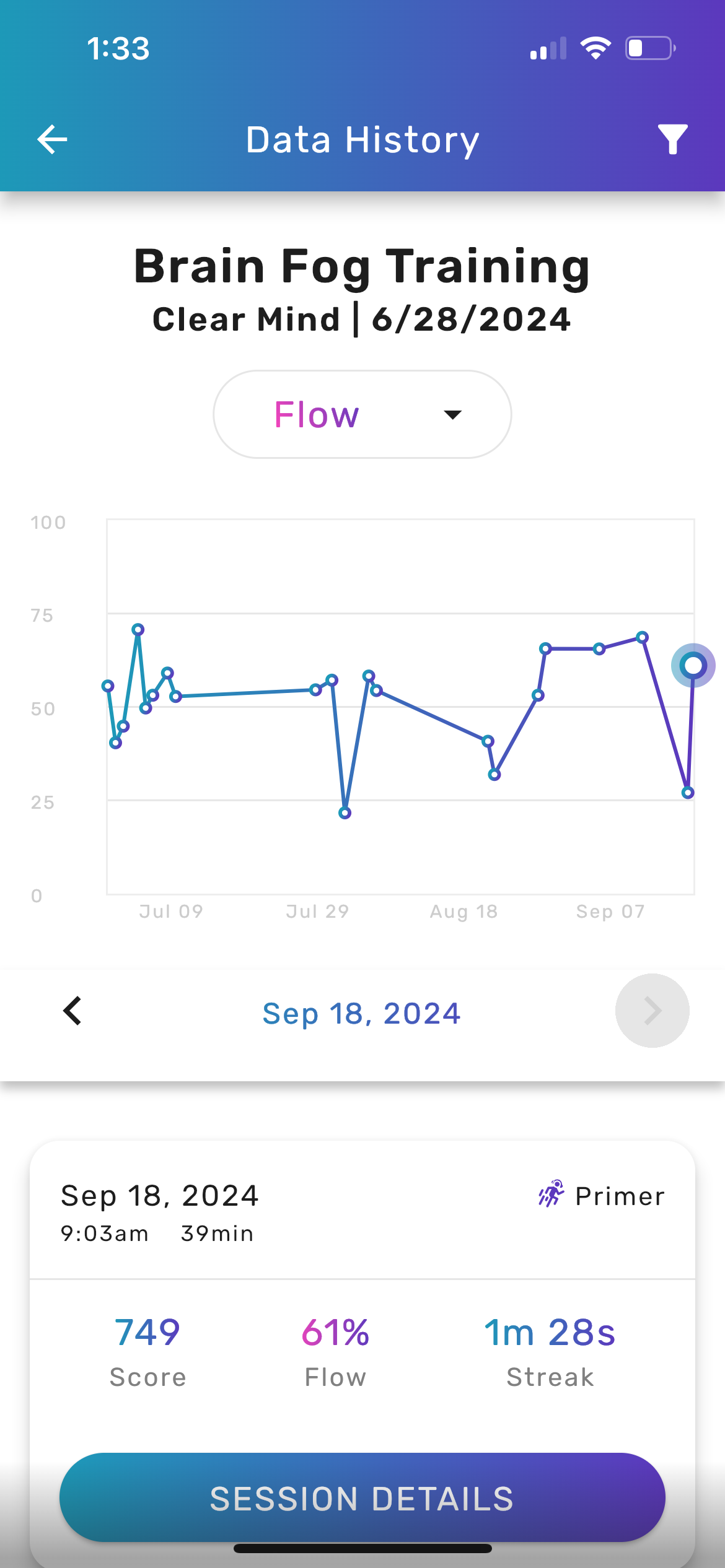
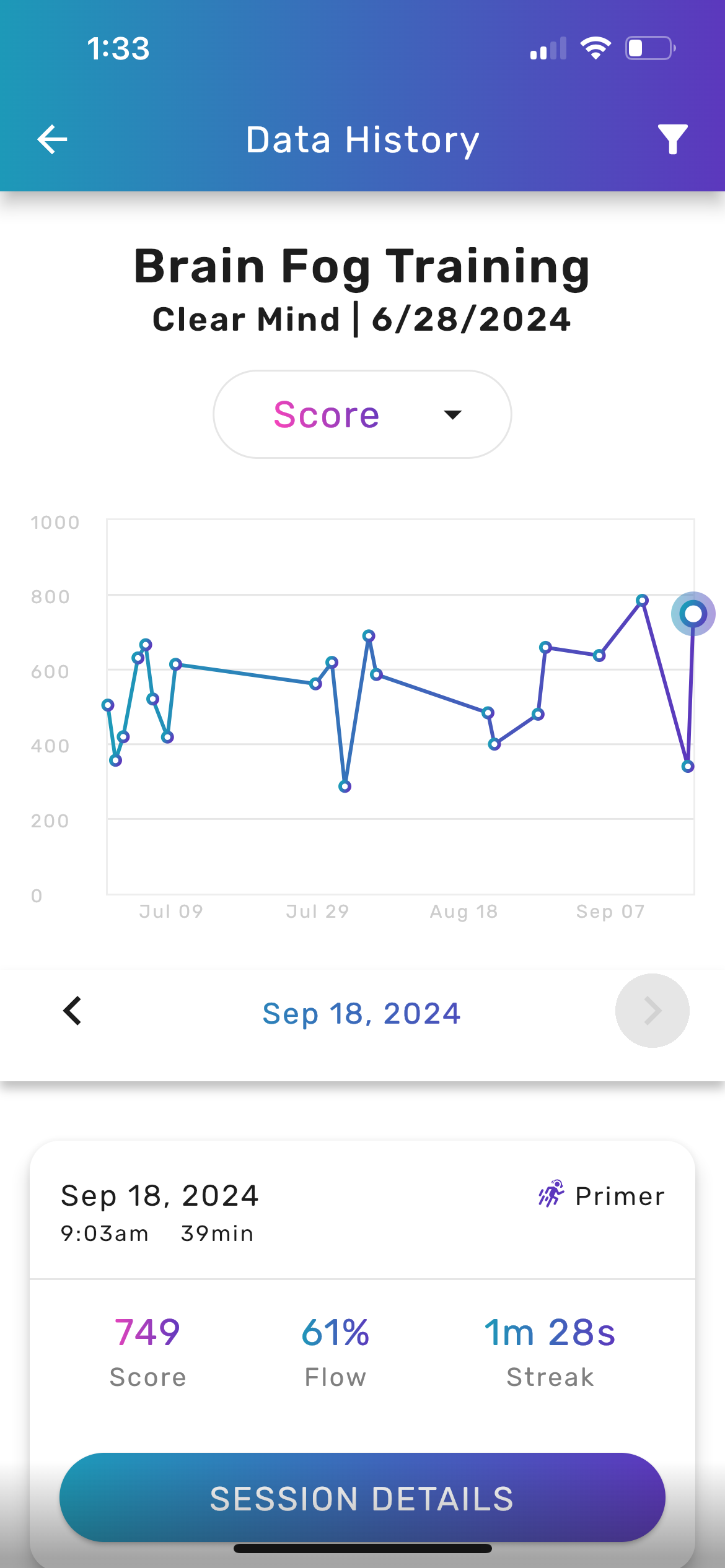
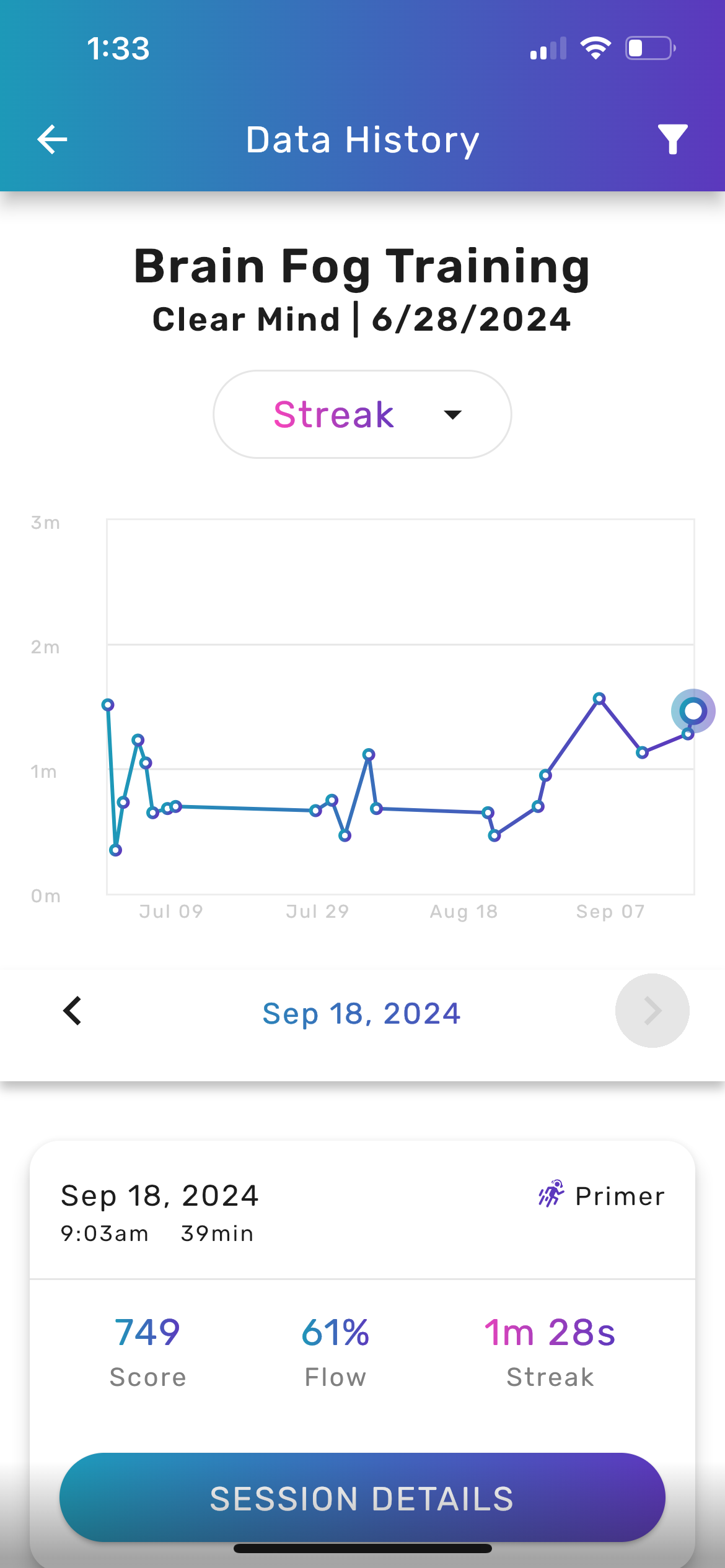
I’ve found that after my sessions focused on cognitive performance and the infrared light boosts, I feel much more calm and less overwhelmed with my to-do list. I do get some energy from the boosts, while other trainings can leave me a little more tired after the fact — I recommend doing these when you have a little, not a lot, of energy for optimal performance. Too little energy and brain training makes me sleepier, and too much energy while brain training makes me antsy.
I’ve also tested some of the sleep training programs, and can happily say yes they do result in feeling like you’ve had a glass of wine to wind down. Calm and grounded for bed, no boozy bevvies required. 🍷
Is Sens.ai secure?
With any device that collects biometric data like this, I’m always wary of the privacy policy in place to protect my information. Particularly with fitness trackers that monitor menstruation and fertility, given the contention around women’s reproductive rights here in the US.
Sens.ai does collect data, and while it is personally identifiable to their team, it is never shared with researchers without being anonymized first. However, it’s worth noting that if the company were to ever be sold or acquired, my personal data would transfer to the new owner — which could get concerning depending on what they’d like to do with that information.
Opting in and out of sharing your data is also fairly easy, as the brand is launching new features as they go. I had a notification one day asking if I would be interested in sharing my data in advance of a new Brain Age feature rollout. I said yes, in the spirit of participation, and am eagerly awaiting the new feature.
You can read the entire terms of service, privacy policy, and privacy overview for more info.
The big question: Is Sens.ai worth it?
Whether or not Sens.ai is worth your investment ultimately depends on your individual circumstances and goals. For those who can commit long-term — recognizing that this is not merely a quick fix — Sens.ai could be transformative.
“For those who can commit long-term — recognizing that this is not merely a quick fix — Sens.ai could be transformative.”
The headset costs $1,500, and the membership costs $20/month when you pay a full year upfront or $60 on a month-to-month basis. While the membership isn’t required, I think it’s the best way to get the most for your money. A couple of positives here, Sens.ai does offer a payment plan through Affirm, plus a 30-day return policy for undamaged headsets, and a one-year warranty for hardware defects.
While this does make Sens.ai a bit of an investment, I do recommend it if you’re someone who is used to investing in wellness retreats, fitness and mindfulness classes, or other self-care practices. Heck, my old yoga studio here in Los Angeles now costs $200 a month — I’d rather invest in something I like doing at home than feel pressured by the high monthly cost of membership elsewhere.
When you compare the pricing to in-clinic neurofeedback sessions, you’ll also get more value from your spend (I’ve read that sessions can cost around $150–$200 per session, with roughly ten sessions recommended.) While you won’t get all the same raw data and analysis as you might with a practitioner, the pricing for the technology does ultimately make sense when you compare it to treatments in a clinical setting.
Another factor for consideration is that you can share the headset with up to five people, which makes the investment a little more palatable if you’re in a household of folks who want to up their brain game. Note, though, that each user will need their own membership. (I do like that with my membership, I get three monthly “guest passes” so that my friends and fam can give the device a try!)
“You can share the headset with up to five people, which makes the investment a little more palatable if you’re in a household of folks who want to up their brain game.”
It’s also worth mentioning that for the price, you’re going to want to give yourself a little grace and understand this is a long-term commitment versus a quick fix. I got wildly sick in July for over ten days, which disrupted my daily streak significantly, and it’s been a bit difficult to pick back up consistently ever since. (I have now integrated it into my monthly goals, and I’m back on track!) If something similar happens in the first few months of your own experience with this device, give yourself time to recalibrate and get back into the habit — the app is only continuing to get better, so you’re not going to miss out on things while you move forward and live your life.
One of the biggest drawbacks other users have noted is that you don’t actually get access to raw EEG data. After further conversation with the Sens.ai team, I realized that information wouldn’t do me much good anyway — I’m not trained to understand what that data means, so it could be more of a distraction than anything else. The app does a good job of telling you what and why you’re training with each session through the use of “minerals” that each session unlocks. Think of it as different types of XP you’d get in a video game.
“The app tells you what and why you’re training with each session through the use of ‘minerals’ that each session unlocks. Think of it as different types of XP you’d get in a video game. “
I’d also like to see a more robust reporting experience, with trendlines in HRV, time-of-day comparisons, and before-and-after check-in prompts to see how I’ve been feeling over the past few months. Right now, the app does offer line graphs for your session score, flow, and streak of time maintaining focus, but I’d like to see more!
Ultimately, I’m excited and intrigued by Sens.ai’s development in consumer neurotechnology and am looking forward to watching as the device and its app continue to grow and evolve. There is something empowering about watching my scores and comparing them to things like my sleep quality, previous day’s alcohol intake, or general mood. (And, as a competitive person who loves to see positive numbers and trends, it makes me want to rest more so that I can get my scores up. I would have never thought I would be vying to rest more!)
Sens.ai combines promising technologies into a user-friendly package that may be particularly beneficial for individuals like me who are navigating ADHD or seeking enhanced cognitive performance.
“While it requires a significant investment and lacks extensive scientific validation specific to this device at present, the science and the expert insight supports what Sens.ai is doing.”
While it requires a significant investment and lacks extensive scientific validation specific to this device at present, the science and the expert insight support what Sens.ai is doing. I can’t help but be energized by my experience and the potential that lies ahead — not just for myself but for anyone looking to unlock their cognitive potential. You can even find more testimonials and experiences from fellow Sens.ai users on this subreddit.
“The brain is capable of incredible change,” notes founder Paola Telfar in her podcast interview. “We just need to provide the right tools and environment for that to happen.” And yes, I think that Sens.ai fits the bill.
Emily McGowan is the Editorial Director at The Good Trade. She studied Creative Writing and Business at Indiana University, and has over ten years of experience as a writer and editor in sustainability and lifestyle spaces. Since 2017, she’s been discovering and reviewing the top sustainable home, fashion, beauty, and wellness products so readers can make their most informed decisions. Her editorial work has been recognized by major publications like The New York Times and BBC Worklife. You can usually find her in her colorful Los Angeles apartment journaling, caring for her rabbits and cat, or gaming. Say hi on Instagram!




